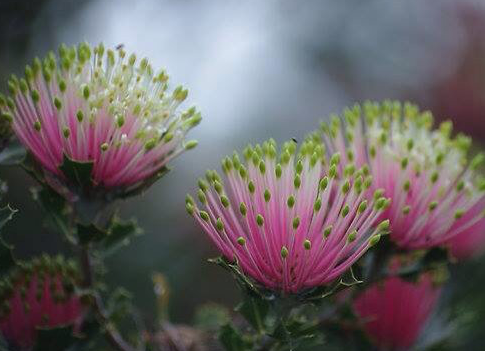Banksia cuneata is a native Australian plant with recognisable flowers known for their vibrant pink colour. The plant also goes by the name of Matchstick banksia after the shape of the spindles found on the flowers. Sadly, Banksia cuneata is currently classified as critically endangered after a 1982 study found that only 5 populations containing around 450 plants are left. This number has since risen due to conservation efforts but as the plant is highly susceptible to damage from climate change and human intervention, not enough regeneration has yet occurred to ensure its survival. The plant is native to the south western part of Western Australia. In the 1930s, up to 93% of the wheatbelt where Banksia cuneata is found was cleared for land. Unfortunately, this is why a full regeneration hasn’t been possible for Banksia cuneata as the deep yellow sand favoured by the plant occurs only in patches in this particular part of Australia. On top of this, Banksia cuneata is susceptible to fire damage from bush fires and introduced pests such as rabbits. Interestingly, the seeds are only released following fire however need sufficient time in between fires for the young seedling to grow. With rising temperatures and increased bushfires, this of course hasn’t been possible, decimating the population. Conservation efforts are still underway with farmers coming on board and fencing off areas and restricting entry of rabbits. Still, more needs to be done to protect this beautiful native Australian plant.
Australian Endangered Plants: Matchstick Banksia

EXPLORE BEST SELLERS
Bench Spray
The multifunctional best seller
From
$12.00 AUD
Rated 5.0 out of 5
420 Reviews
Based on 420 reviews
Hand Wash
Truly gentle & natural
From
$12.00 AUD
Rated 5.0 out of 5
245 Reviews
Based on 245 reviews

































